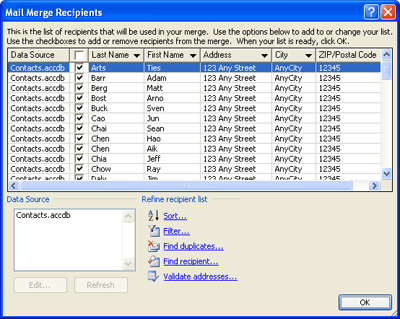What is a SELECT statement in SQL? These result tables are also called result sets. If the SELECT statement is a simple SELECT , then an ORDER BY may contain any arbitrary expressions. However, if the SELECT is a compound SELECT , then ORDER BY expressions that are not aliases to output columns must be exactly the same as an expression used as an output column.
To help easier to understand each part, we will break the SELECT statement into multiple easy-to-understand tutorials. The SUM function is an aggregate function that returns the sum the non-NULL values or only the distinct values in a group. We will use the customers table in the sample database for demonstration. For example, you can use the CASE expression in clauses such as WHERE, ORDER BY, HAVING, SELECT and statements such as SELECT , UPDATE, and DELETE.
The simple CASE expression compares an expression to a list of expressions to return. The LIMIT clause is an optional part of the SELECT statement. A subquery is a SELECT statement nested in another statement. Secon evaluate the conditions in the WHERE clause to get the rows that met the conditions.
SQLite SELECT DISTINCT examples. Thir make the final result set based on the rows in the previous step with columns in the SELECT clause. The following SQL statement is one of the most common ones. It is also one of the most expensive ones. The WHERE clause not only is used in SELECT statement, but it is also used in UPDATE, DELETE statement, etc.
You can also provide extra criteria to further narrow down the data that is returned. You can do this with an update select , but you can only do one field at a time. It would be nice if Sqlite supported joins on an update statement, but it does not. Here is a related SO question, How do I UPDATE from a SELECT in SQL Server? Does sqlite support the sql function if in the select statement?

Note: i have mobile_sales_details table. When SELECT returns a table (or multiple rows) IN is used. If you are sure the inner query should return only one row, then you will have to adjust the inner query accordingly.
Doing over 2round-trip messages, sequentially, can be a serious performance drag. Here the starting position is a positive number but the value for retrieving character is negative, so the abs(-3) characters preceding the 4th character are returned. The INDEXED BY index-name clause specifies that the named index must be used in order to look up values on the preceding table. The NOT INDEXED clause specifies that no index shall.
I really need some help with sqlite. I have one database with two tables, lets call them tableand table2. These two tables are the same basically, same column names and same amount of columns. Although we have no control over the query itself (as it is hardcoded in our target), studying the SELECT process carefully will prove beneficial in our quest for exploitation.
Consider how this query works. The initial- select runs first and returns a single row with a single column 1. This one row is added to the queue. In step 2a, that one row is extracted from the queue and added to cnt.

Then the recursive- select is run in accordance with step 2c generating a single new row with value to add to the queue.
Nincsenek megjegyzések:
Megjegyzés küldése
Megjegyzés: Megjegyzéseket csak a blog tagjai írhatnak a blogba.